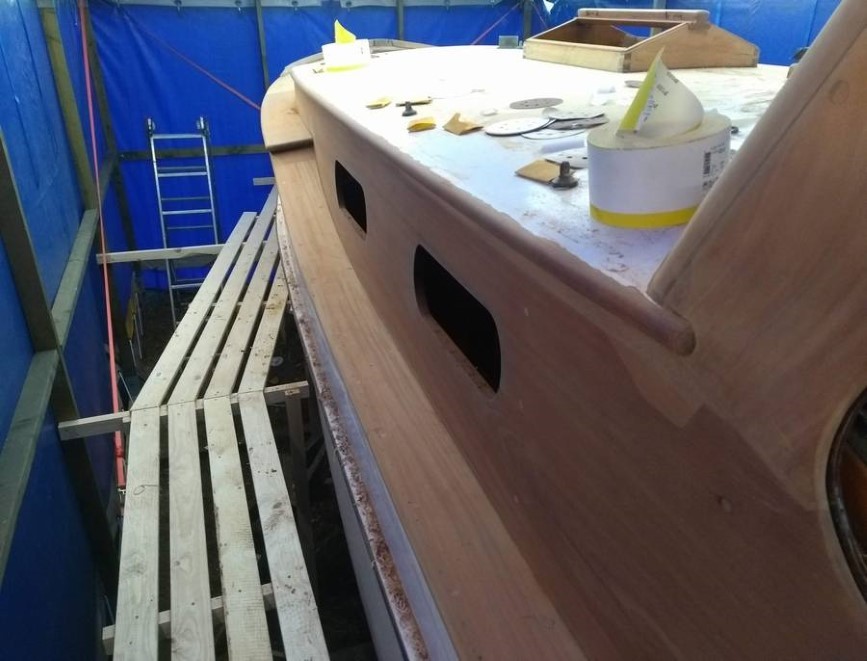
In order to be able to work and especially spray comfortably, it was necessary to make a scaffold around the entire boat. I bought some cheap planks and some battens for around DKK 1000. I chose to fasten the horizontal battens to the tent poles, and support them with battens down to the ground. It has proven to be a great way of doing it, flexible enough to follow the tent's movement when there is wind. The height is fine and it has been nice not to have to climb up and down the ladder all the time.
Due to the heavy sun bleaching of the mahogany, it is necessary to remove around 0,5 mm wood to obtain a uniform color, and especially the repairs from the renovation were a hassle to sand. Sapeli mahogany does not behave like real mahogany. It bleaches heavily by sunlight, is very hard to sand, and the bleaching goes deep into the wood. I discovered that the wood has become darker than original below the bleached layer - where the wood has been protected by deck equipment, the color hasn't changed. It is necessary to sand very deep to remove the color difference.
This effect was also present on the round moldings on the deckhouse. I bought the wood for them as being Sapeli, but it looks different, and both bleaching and darkening are much more pronounced.
|